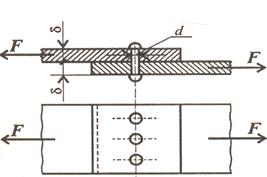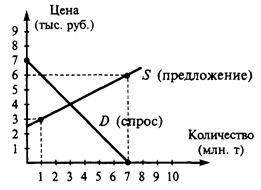I. Consider your answers to the following. 1.Which words do we call homonyms?
1.Which words do we call homonyms? 2. Why can't homonyms be regarded as expressive means of the language? 3. What is the traditional classification of homonyms? Illustrate your answer with examples. 4. What are the distinctive features of the classification of homonyms suggested by Professor A. I. Smirnitsky? CHAPTER 10 Synonyms: Are Their Meanings the Same or Different? Synonymy is one of modern linguistics' most controversial problems. The very existence of words traditionally called synonyms is disputed by some linguists; the nature and essence of the relationships of these words is hotly debated and treated in quite different ways by the representatives of different linguistic schools. Even though one may accept that synonyms in the traditional meaning of the term are somewhat elusive and, to some extent, fictitious it is certain that there are words in any vocabulary which clearly develop regular and distinct relationships when used in speech. In the following extract, in which a young woman rejects a proposal of marriage, the verbs like, admire and love, all describe feelings of attraction, approbation, fondness: "I have always liked you very much, I admire your talent, but, forgive me, — I could never love you as a wife should love her husband." (From The Shivering Sands by V. Holt) Yet, each of the three verbs, though they all describe more or less the same feeling of liking, describes it in its own way: "I like you, i. e. I have certain warm feelings towards you, but they are not strong enough for me to describe them as "love"," — so that like and love are in a way opposed to each other. The duality of synonyms is, probably, their most confusing feature: they are somewhat the same, and yet they are most obviously different. Both as pects of their dual characteristics are essential for them to perform their function in speech: revealing different aspects, shades and variations of the same phenomenon. "— Was she a pretty girl? — I would certainly have called her attractive." (Ibid.) The second speaker in this short dialogue does his best to choose the word which would describe the girl most precisely: she was good-looking, but pretty is probably too good a word for her, so that attractive is again in a way opposed to pretty (not pretty, only attractive), but this opposition is, at the same time, firmly fixed on the sameness of pretty and attractive: essentially they both describe a pleasant appearance. Here are some more extracts which confirm that synonyms add precision to each detail of description and show how the correct choice of a word from a group of synonyms may colour the whole text. The first extract depicts a domestic quarrel. The infuriated husband shouts and glares at his wife, but "his glare suddenly softened into a gaze as he turned his eyes on the little girl" (i. e. he had been looking furiously at his wife, but when he turned his eyes on the child, he looked at her with tenderness). The second extract depicts a young father taking his child for a Sunday walk. "Neighbours were apt to smile at the long-legged bare-headed young man leisurely strolling along the street and his small companion demurely trotting by his side." (From Some Men and Women by B. Lowndes) The synonyms stroll and trot vividly describe two different styles of walking, the long slow paces of the young man and the gait between a walk and a run of the short-legged child. In the following extract an irritated producer is talking to an ambitious young actor: "Think you can play Romeo? Romeo should smile, not grin, walk, not swagger, speak his lines, not mumble them." (Ibid.) Here the second synonym in each pair is quite obviously and intentionally contrasted and opposed to the first: "... smile, not grin." Yet, to grin means more or less the same as to smile, only, perhaps, denoting a broader and a rather foolish smile. In the same way to swagger means "to walk", but to walk in a defiant or insolent manner. Mumbling is also a way of speaking, but of speaking indistinctly or unintelligibly. Synonyms are one of the language's most important expressive means. The above examples convincingly demonstrate that the principal function of synonyms is to represent the same phenomenon in different aspects, shades and variations. And here is an example of how a great writer may use synonyms for stylistic purposes. In this extract from Death of a Hero R. Aldington describes a group of survivors painfully retreating after a defeat in battle: "... The Frontshires [name of battalion] staggered rather than walked down the bumpy trench... About fifty men, the flotsam of the wrecked battalion, stumbled past them.... They shambled heavily along, not keeping step or attempting to, bent wearily forward under the weight of their equipment, their unseeing eyes turned to the muddy ground." In this extract the verb to walk is used with its three synonyms, each of which describes the process of walking in its own way. In contrast to walk the other three words do not merely convey the bare idea of going on foot but connote the manner of walking as well. Stagger means "to sway while walking" and, also, implies a considerable, sometimes painful, effort. Stumble, means "to walk tripping over uneven ground and nearly falling." Shamble implies dragging one's feet while walking; a physical effort is also connoted by the word. The use of all these synonyms in the extract creates a vivid picture of exhausted, broken men marching from the battle-field and enhances the general atmosphere of defeat and hopelessness. A carefully chosen word from a group of synonyms is a great asset not only on the printed page but also in a speaker's utterance. It was Mark Twain who said that the difference between the right word and just the right word is the difference between the lightning and the lightning-bug. The skill to choose the most suitable word in every context and every situation is an essential part of the language learning process. Students should be taught both to discern the various connotations in the meanings of synonyms and to choose the word appropriate to each context.
|




